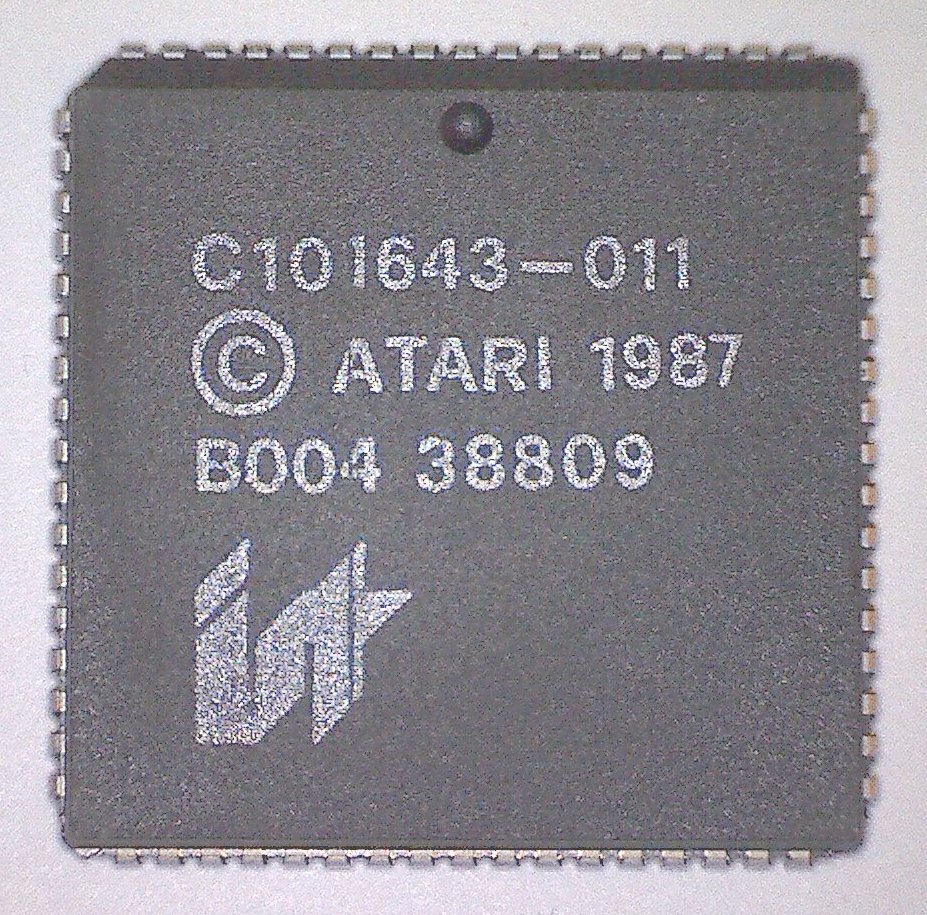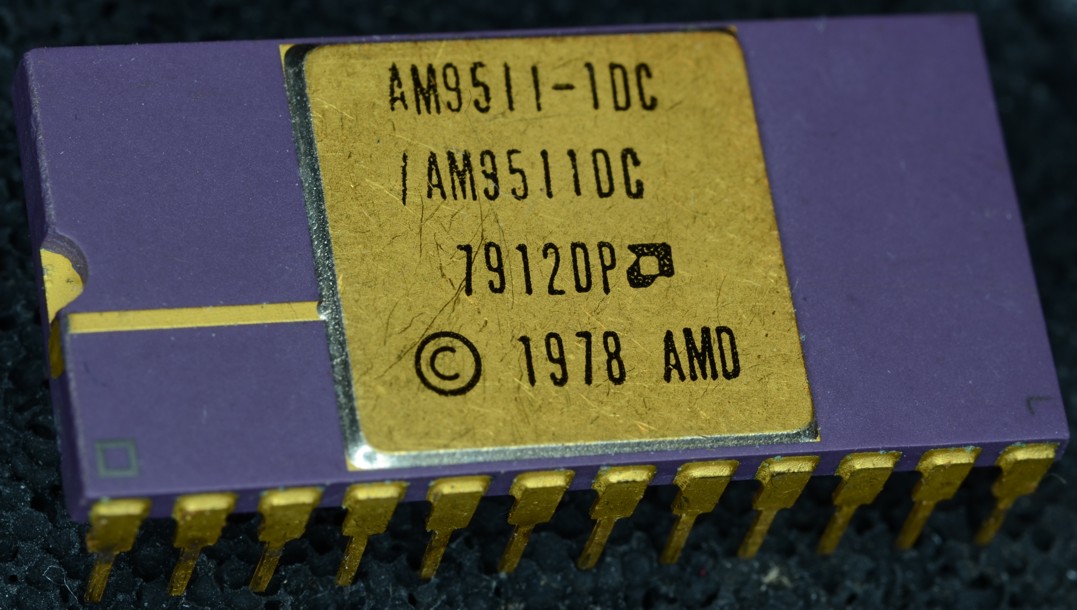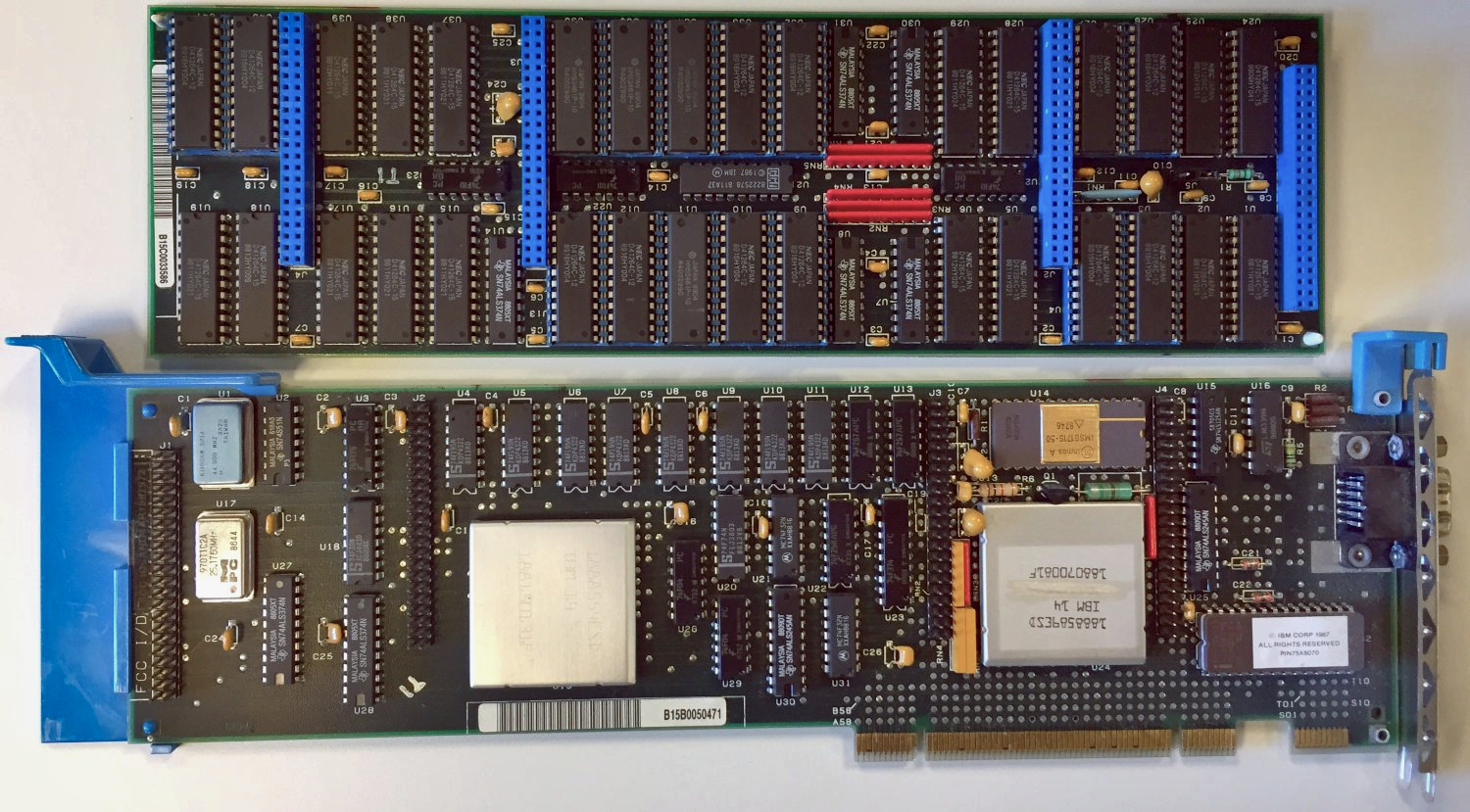|
BLiTTER
A blitter is a circuit, sometimes as a coprocessor or a logic block on a microprocessor, dedicated to the rapid movement and modification of data within a computer's memory. A blitter can copy large quantities of data from one memory area to another relatively quickly, and in parallel with the CPU, while freeing up the CPU's more complex capabilities for other operations. A typical use for a blitter is the movement of a bitmap, such as windows and fonts in a graphical user interface or images and backgrounds in a 2D video game. The name comes from the bit blit operation of the 1973 Xerox Alto, which stands for bit-block transfer. A blit operation is more than a memory copy, because it can involve data that's not byte aligned (hence the ''bit'' in ''bit blit''), handling transparent pixels (pixels which should not overwrite the destination), and various ways of combining the source and destination data. Blitters have largely been superseded by programmable graphics process ... [...More Info...] [...Related Items...] OR: [Wikipedia] [Google] [Baidu] |
Graphics Processing Unit
A graphics processing unit (GPU) is a specialized electronic circuit designed to manipulate and alter memory to accelerate the creation of images in a frame buffer intended for output to a display device. GPUs are used in embedded systems, mobile phones, personal computers, workstations, and game consoles. Modern GPUs are efficient at manipulating computer graphics and image processing. Their parallel structure makes them more efficient than general-purpose central processing units (CPUs) for algorithms that process large blocks of data in parallel. In a personal computer, a GPU can be present on a video card or embedded on the motherboard. In some CPUs, they are embedded on the CPU die. In the 1970s, the term "GPU" originally stood for ''graphics processor unit'' and described a programmable processing unit independently working from the CPU and responsible for graphics manipulation and output. Later, in 1994, Sony used the term (now standing for ''graphics processing ... [...More Info...] [...Related Items...] OR: [Wikipedia] [Google] [Baidu] |
Amiga
Amiga is a family of personal computers introduced by Commodore International, Commodore in 1985. The original model is one of a number of mid-1980s computers with 16- or 32-bit processors, 256 KB or more of RAM, mouse-based GUIs, and significantly improved graphics and audio compared to previous 8-bit systems. This includes the Atari ST—released earlier the same year—as well as the Macintosh and Acorn Archimedes. Based on the Motorola 68000 microprocessor, the Amiga differs from its contemporaries through the inclusion of custom hardware to accelerate graphics and sound, including sprite (computer graphics), sprites and a blitter, and a pre-emptive multitasking operating system called AmigaOS. The Amiga 1000 was released in July 1985, but production problems kept it from becoming widely available until early 1986. The best-selling model, the Amiga 500, was introduced in 1987 along with the more expandable Amiga 2000. The Amiga 3000 was introduced in 1990, followed by t ... [...More Info...] [...Related Items...] OR: [Wikipedia] [Google] [Baidu] |
Coprocessor
A coprocessor is a computer processor used to supplement the functions of the primary processor (the CPU). Operations performed by the coprocessor may be floating-point arithmetic, graphics, signal processing, string processing, cryptography or I/O interfacing with peripheral devices. By offloading processor-intensive tasks from the main processor, coprocessors can accelerate system performance. Coprocessors allow a line of computers to be customized, so that customers who do not need the extra performance do not need to pay for it. Functionality Coprocessors vary in their degree of autonomy. Some (such as FPUs) rely on direct control via coprocessor instructions, embedded in the CPU's instruction stream. Others are independent processors in their own right, capable of working asynchronously; they are still not optimized for general-purpose code, or they are incapable of it due to a limited instruction set focused on accelerating specific tasks. It is common for these to be d ... [...More Info...] [...Related Items...] OR: [Wikipedia] [Google] [Baidu] |
Bit Blit
Bit blit (also written BITBLT, BIT BLT, BitBLT, Bit BLT, Bit Blt etc., which stands for ''bit block transfer'') is a data operation commonly used in computer graphics in which several bitmaps are combined into one using a '' boolean function''. The operation involves at least two bitmaps: a "source" (or "foreground") and a "destination" (or "background"), and possibly a third that is often called the "mask A mask is an object normally worn on the face, typically for protection, disguise, performance, or entertainment and often they have been employed for rituals and rights. Masks have been used since antiquity for both ceremonial and pra ...". The result may be written to a fourth bitmap, though often it replaces the destination. The pixels of each are combined bitwise according to the specified raster operation (ROP) and the result is then written to the destination. The ROP is essentially a Boolean logic, boolean formula. The most obvious ROP overwrites the destinat ... [...More Info...] [...Related Items...] OR: [Wikipedia] [Google] [Baidu] |
TMS34010
The TMS34010, developed by Texas Instruments and released in 1986, was the first programmable graphics processor integrated circuit. While specialized graphics hardware existed earlier, such as blitters, the TMS34010 chip is a microprocessor which includes graphics-oriented instructions, making it a combination of a CPU and what would later be called a GPU. It serves both purposes in a number of high-profile arcade games beginning with 1988's '' Narc'' and also '' Mortal Kombat'' and ''NBA Jam''. '' Hard Drivin''' (1989) from Atari Games contains two of the processors. The TMS34010 was used in professional-level video accelerator cards for IBM PC compatibles in the early 1990s. The TMS34010 is a bit addressable, 32-bit processor, with two register files, each with fifteen registers and sharing a sixteenth stack pointer. The instruction set supports drawing into two-dimensional bitmaps, arbitrary variable-width data, conversion of pixel data to different bit depths, and arith ... [...More Info...] [...Related Items...] OR: [Wikipedia] [Google] [Baidu] |
Mindset (computer)
The Mindset, released in spring 1984, is an Intel 80186-based MS-DOS personal computer. Unlike other IBM PC compatibles of the time, it has custom graphics hardware supporting 320x200 resolution with 16 simultaneous colors (chosen from a 512-shade palette), and hardware-accelerated drawing capabilities including a blitter which allows it to update the screen 50 times as fast as a CGA adapter in a standard PC. The basic unit was priced at . It is conceptually similar to the more successful Commodore Amiga released over a year later. The system never sold well and disappeared from the market after about a year. This was lamented by industry commenters, who looked at this event as the first clear evidence of the end of innovation in favor of compatibility. Its distinctive case remains in the permanent collection of the Museum of Modern Art in New York. History Design In most computer systems of the era, the CPU is used to create graphics by drawing bit patterns directly into memor ... [...More Info...] [...Related Items...] OR: [Wikipedia] [Google] [Baidu] |
IBM 8514
IBM 8514 is a graphics card manufactured by IBM and introduced with the IBM PS/2 line of personal computers in 1987. It supports a display resolution of pixels with 256 colors at 43.5 Hz (interlaced), or at 60 Hz (non-interlaced). 8514 usually refers to the display controller hardware (such as the 8514/A display adapter). However, IBM sold the companion CRT monitor (for use with the 8514/A) which carries the same designation, 8514. The 8514 uses a standardised programming interface called the "Adapter Interface" or AI. This interface is also used by XGA, IBM Image Adapter/A, and clones of the 8514/A and XGA such as the ATI Technologies Mach 32 and IIT AGX. The interface allows computer software to offload common 2D-drawing operations ( line-draw, color-fill, and block copies via a blitter) onto the 8514 hardware. This frees the host CPU for other tasks, and greatly improves the speed of redrawing a graphics visual (such as a pie-chart or CAD-illustration). Th ... [...More Info...] [...Related Items...] OR: [Wikipedia] [Google] [Baidu] |
Graphical User Interface
The GUI ( "UI" by itself is still usually pronounced . or ), graphical user interface, is a form of user interface that allows User (computing), users to Human–computer interaction, interact with electronic devices through graphical icon (computing), icons and audio indicator such as primary notation, instead of text-based user interface, text-based UIs, typed command labels or text navigation. GUIs were introduced in reaction to the perceived steep learning curve of CLIs (command-line interfaces), which require commands to be typed on a computer keyboard. The actions in a GUI are usually performed through Direct manipulation interface, direct manipulation of the graphical elements. Beyond computers, GUIs are used in many handheld mobile devices such as MP3 players, portable media players, gaming devices, smartphones and smaller household, office and Distributed control system, industrial controls. The term ''GUI'' tends not to be applied to other lower-display resolution User ... [...More Info...] [...Related Items...] OR: [Wikipedia] [Google] [Baidu] |
Joust (video Game)
''Joust'' is an action game developed by Williams Electronics and released in arcades in 1982. While not the first two-player cooperative video game, ''Joust''s success and polished implementation popularized the concept. Player 1 rides an ostrich, player 2 a stork. Repeatedly pressing the ''flap'' button gains altitude, while a two-directional joystick controls direction. In a collision with enemy knights riding buzzards—or the other player—the higher rider dismounts the other. John Newcomer led the development team: Bill Pfutzenreuter, Janice Woldenberg-Miller ( Hendricks), Python Anghelo, Tim Murphy, and John Kotlarik. Newcomer aimed to create a flying game, with cooperative two-player gameplay, while avoiding the overdone space theme. The game was well-received by players and critics, and the mechanics influenced other games. ''Joust'' was ported to numerous home systems and was followed by a more complex and less popular arcade sequel in 1986: '' Joust 2: Survival of t ... [...More Info...] [...Related Items...] OR: [Wikipedia] [Google] [Baidu] |
NBA Jam (1993 Video Game)
''NBA Jam'' is a basketball video game developed and published by Midway for arcades in 1993. It is the first entry in the ''NBA Jam'' series. The project leader for this game was Mark Turmell. ''NBA Jam'' was the third basketball video game released by Midway, after ''TV Basketball'' (1974) and ''Arch Rivals'' (1989). The gameplay of ''NBA Jam'' is based on ''Arch Rivals'', which was also a 2-on-2 basketball game. However, it was the release of ''NBA Jam'' that brought mainstream success to the genre. The release of ''NBA Jam'' popularized a subgenre of basketball games which were based around fast, action-packed gameplay and exaggerated realism, a formula which Midway would also later apply to the sports of hockey (''NHL Open Ice'' and later '' NHL Hitz''), American football (''NFL Blitz''), and baseball (''MLB Slugfest''). Gameplay ''NBA Jam'', which features two-on-two basketball, is one of the first real playable basketball arcade games and is also one of the first spo ... [...More Info...] [...Related Items...] OR: [Wikipedia] [Google] [Baidu] |
Mortal Kombat
''Mortal Kombat'' is an American media franchise centered on a series of video games originally developed by Midway Games in 1992. The development of the first game was originally based on an idea that Ed Boon and John Tobias had of making a video game starring Jean-Claude Van Damme, but when that idea fell through, a science fantasy-themed fighting game was created instead. Still, the developers paid homage to him with Johnny Cage (one of the main characters in the franchise), a fictional film star whose personal style resembles Van Damme's. Mortal Kombat (1992 video game), The original ''Mortal Kombat'' was the first fighting game to introduce a Reptile (Mortal Kombat), secret fighter, reached if the player fulfilled a set of requirements. The original game spawned List of Mortal Kombat media, many sequels with several action-adventure games. It also has a comic book series and a card game. Movie producer Lawrence Kasanoff, Larry Kasanoff licensed the rights to the game in th ... [...More Info...] [...Related Items...] OR: [Wikipedia] [Google] [Baidu] |
Smash TV
''Smash TV'' is a 1990 arcade video game created by Eugene Jarvis and Mark Turmell for Williams Electronics Games. It is a dual-stick shooter (one for moving and the other for firing) in the same vein as 1982's ''Robotron: 2084'' (co-created by Jarvis). The Super NES, Genesis, Master System, and Game Gear versions are titled ''Super Smash TV''. The plot centers on a dystopian television show during the then-future year of 1999, where one or two contestants must shoot their way to fame and fortune; the show is taped in front of a live studio audience with broadcast via satellite worldwide. The goal of the game show is to kill or be killed, and once all of the challengers in each arena have been massacred, the contestant(s) will proceed to survive the next gauntlet. Gameplay 250px, left, Arcade screenshot The play mechanic is similar to that of Eugene Jarvis' earlier ''Robotron: 2084'', with dual-joystick controls and series of single-screen arenas. While most of the enemies in ... [...More Info...] [...Related Items...] OR: [Wikipedia] [Google] [Baidu] |






